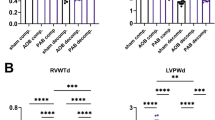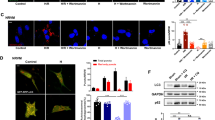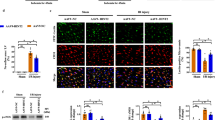Abstract
Whether the response of the fetal heart to ischemia-reperfusion is associated with activation of the c-Jun N-terminal kinase (JNK) pathway is not known. In contrast, involvement of the sarcolemmal L-type Ca2+ channel (LCC) and the mitochondrial KATP (mitoKATP) channel has been established. This work aimed at investigating the profile of JNK activity during anoxia-reoxygenation and its modulation by LCC and mitoKATP channel. Hearts isolated from 4-day-old chick embryos were submitted to anoxia (30 min) and reoxygenation (60 min). Using the kinase assay method, the profile of JNK activity in the ventricle was determined every 10 min throughout anoxia-reoxygenation. Effects on JNK activity of the LCC blocker verapamil (10 nM), the mitoKATP channel opener diazoxide (50 μM) and the blocker 5-hydroxydecanoate (5-HD, 500 μM), the mitochondrial Ca2+ uniporter (MCU) inhibitor Ru360 (10 μM), and the antioxidant N-(2-mercaptopropionyl) glycine (MPG, 1 mM) were determined. In untreated hearts, JNK activity was increased by 40% during anoxia and peaked fivefold relative to basal level after 30–40 min reoxygenation. This peak value was reduced by half by diazoxide and was tripled by 5-HD. Furthermore, the 5-HD-mediated stimulation of JNK activity during reoxygenation was abolished by diazoxide, verapamil or Ru360. MPG had no effect on JNK activity, whatever the conditions. None of the tested pharmacological agents altered JNK activity under basal normoxic conditions. Thus, in the embryonic heart, JNK activity exhibits a characteristic pattern during anoxia and reoxygenation and the respective open-state of LCC, MCU and mitoKATP channel can be a major determinant of JNK activity in a ROS-independent manner.




Similar content being viewed by others
References
Sarre A, Maury P, Kucera P et al (2006) Arrhythmogenesis in the developing heart during anoxia-reoxygenation and hypothermia-rewarming: an in vitro model. J Cardiovasc Electrophysiol 17:1350–1359
Sedmera D, Kucera P, Raddatz E (2002) Developmental changes in cardiac recovery from anoxia-reoxygenation. Am J Physiol Regul Integr Comp Physiol 283:R379–R388
Tenthorey D, de Ribaupierre Y, Kucera P et al (1998) Effects of verapamil and ryanodine on activity of the embryonic chick heart during anoxia and reoxygenation. J Cardiovasc Pharmacol 31:195–202
Sarre A, Lange N, Kucera P et al (2005) mitoKATP channel activation in the postanoxic developing heart protects E-C coupling via NO-, ROS-, and PKC-dependent pathways. Am J Physiol Heart Circ Physiol 288:H1611–H1619
Lebuffe G, Schumacker PT, Shao ZH et al (2003) ROS and NO trigger early preconditioning: relationship to mitochondrial KATP channel. Am J Physiol Heart Circ Physiol 284:H299–H308
Garlid KD, Paucek P, Yarov-Yarovoy V et al (1997) Cardioprotective effect of diazoxide and its interaction with mitochondrial ATP-sensitive K+ channels. Possible mechanism of cardioprotection. Circ Res 81:1072–1082
Schulz R, Cohen MV, Behrends M et al (2001) Signal transduction of ischemic preconditioning. Cardiovasc Res 52:181–198
Knight RJ, Buxton DB (1996) Stimulation of c-Jun kinase and mitogen-activated protein kinase by ischemia and reperfusion in the perfused rat heart. Biochem Biophys Res Commun 218:83–88
Omura T, Yoshiyama M, Shimada T et al (1999) Activation of mitogen-activated protein kinases in in vivo ischemia/reperfused myocardium in rats. J Mol Cell Cardiol 31:1269–1279
Gardier S, Sarre A, Thomas AC et al (2006) Activation of the mitoKATP channel differently modulates ERK, JNK and p38 MAPK in the ventricle of the anoxic-reoxygenated developing heart. Arch Mal Coeur Vaisseaux 99:376 (abstract)
Strasburger JF (2005) Prenatal diagnosis of fetal arrhythmias. Clin Perinatol 32:891–912
Kumar S, O’Brien A (2004) Recent developments in fetal medicine. BMJ 328:1002–1006
Fowden AL, Giussani DA, Forhead AJ (2006) Intrauterine programming of physiological systems: causes and consequences. Physiology (Bethesda) 21:29–37
Schaub MC, Hefti MA, Zaugg M (2006) Integration of calcium with the signaling network in cardiac myocytes. J Mol Cell Cardiol 41:183–214
Murphy JG, Smith TW, Marsh JD (1988) Mechanisms of reoxygenation-induced calcium overload in cultured chick embryo heart cells. Am J Physiol 254:H1133–H1141
Hamburger V, Hamilton H (1951) A series of normal stages in the development of the chick embryo. J Morphol 88:49–92
Larsen CM, Wadt KA, Juhl LF et al (1998) Interleukin-1beta-induced rat pancreatic islet nitric oxide synthesis requires both the p38 and extracellular signal-regulated kinase 1/2 mitogen-activated protein kinases. J Biol Chem 273:15294–15300
Lowry O, Rosebrough N, Farr A et al (1951) Protein measurement with the Folin phenol reagent. J Biol Chem 193:265–275
Hreniuk D, Garay M, Gaarde W et al (2001) Inhibition of c-Jun N-terminal kinase 1, but not c-Jun N-terminal kinase 2, suppresses apoptosis induced by ischemia/reoxygenation in rat cardiac myocytes. Mol Pharmacol 59:867–874
Ren J, Zhang S, Kovacs A et al (2005) Role of p38alpha MAPK in cardiac apoptosis and remodeling after myocardial infarction. J Mol Cell Cardiol 38:617–623
Dougherty CJ, Kubasiak LA, Frazier DP et al (2004) Mitochondrial signals initiate the activation of c-Jun N-terminal kinase (JNK) by hypoxia-reoxygenation. Faseb J 18:1060–1070
Allen RG (1991) Oxygen-reactive species and antioxidant responses during development: the metabolic paradox of cellular differentiation. Proc Soc Exp Biol Med 196:117–129
Lebovitz RM, Zhang H, Vogel H et al (1996) Neurodegeneration, myocardial injury, and perinatal death in mitochondrial superoxide dismutase-deficient mice. Proc Natl Acad Sci USA 93:9782–9787
Romano R, Rochat AC, Kucera P et al (2001) Oxidative and glycogenolytic capacities within the developing chick heart. Pediatr Res 49:363–372
Rosa A, Maury JP, Terrand J et al (2003) Ectopic pacing at physiological rate improves postanoxic recovery of the developing heart. Am J Physiol Heart Circ Physiol 284:H2384–H2392
Horbinski C, Chu CT (2005) Kinase signaling cascades in the mitochondrion: a matter of life or death. Free Radic Biol Med 38:2–11
Wiltshire C, Gillespie DA, May GH (2004) Sab (SH3BP5), a novel mitochondria-localized JNK-interacting protein. Biochem Soc Trans 32:1075–1077
O’Rourke B, Cortassa S, Aon MA (2005) Mitochondrial ion channels: gatekeepers of life and death. Physiology (Bethesda) 20:303–315
Anderson CD, Pierce J, Nicoud I et al (2005) Modulation of mitochondrial calcium management attenuates hepatic warm ischemia-reperfusion injury. Liver Transpl 11:663–668
Kim MY, Kim MJ, Yoon IS et al (2006) Diazoxide acts more as a PKC-epsilon activator, and indirectly activates the mitochondrial K(ATP) channel conferring cardioprotection against hypoxic injury. Br J Pharmacol 149:1059–1070
Comelli M, Metelli G, Mavelli I (2007) Downmodulation of mitochondrial F0F1 ATP synthase by diazoxide in cardiac myoblasts: a dual effect of the drug. Am J Physiol Heart Circ Physiol 292:H820–H829
Acknowledgements
We thank Anne-Catherine Thomas for her skilful technical assistance. This work was supported by the Swiss National Science Foundation n°3100A0-105901.
Author information
Authors and Affiliations
Corresponding author
Additional information
A. Sarre and S. Gardier contributed equally to this work.
Rights and permissions
About this article
Cite this article
Sarre, A., Gardier, S., Maurer, F. et al. Modulation of the c-Jun N-terminal kinase activity in the embryonic heart in response to anoxia-reoxygenation: involvement of the Ca2+ and mitoKATP channels. Mol Cell Biochem 313, 133–138 (2008). https://doi.org/10.1007/s11010-008-9750-4
Received:
Accepted:
Published:
Issue Date:
DOI: https://doi.org/10.1007/s11010-008-9750-4




